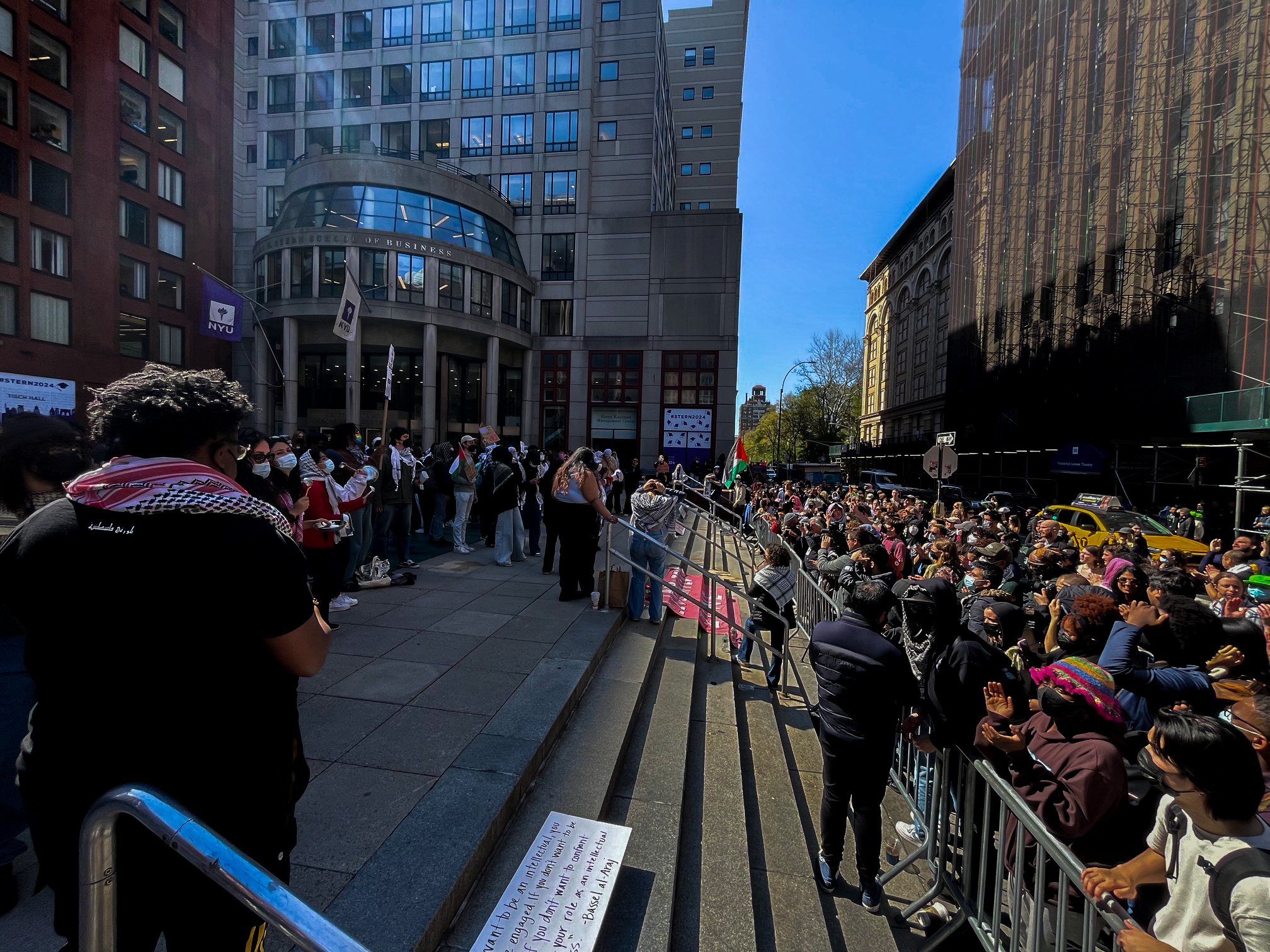
Yessy Salcedo, top right, is a bilingual education teacher at the University Settlement. Photo courtesy of the University Settement
The children in Trinity Amalfitano’s Head Start class at the University Settlement, a community center nestled between the Lower East Side and Chinatown, sit in a circle around the play rug. They each take turns putting blocks in a pile, first a red block, then a blue. One student, 4-year-old Jenny Ng, hesitated as she held a red block in one hand and a blue one in the other.
“Put the red block down, Jenny,” Amalfitano said, but Jenny simply stood there with the blocks in her hand and a confused look on her face. After a moment, the assistant teacher Fanny Ng (no relation to Jenny) repeated the instructions, this time in Cantonese. Jenny understood and quickly placed the red block in the pile.
In this bilingual class, at the children are taught shapes, colors and numbers in English and their native languages. Most students speak only Mandarin, Cantonese or Spanish when they begin school, but they soon learn English as well. The program is one of hundreds of government-funded initiatives in New York City to help teach English to children who do not speak the language.
Funding for bilingual education during the 2009-2010 school year has remained steady at $12.5 million even as the state struggles to close a massive budget deficit in the wake of the recession. But advocates say that’s not enough. In a city where nearly two-thirds of the population are either immigrants or the children of immigrants, and 47.6 percent of households speak a language other than English, proponents of bilingual education say that is reason enough to push for more state funding.
“There is a big need and demand for bilingual education here in this area because we have lots of kids whose families are immigrants from China or the Dominican Republic,” said Yenny Salcedo, a Spanish-speaking kindergarten teacher at the University Settlement. “We’re actually expanding. We’re doing well though we could always use more money to run the programs.”
Bilingual education has been a hotbed of controversy since it was first adopted nearly four decades ago when Congress passed the Bilingual Education Act. That legislation was altered under the Bush administration with the No Child Left Behind Act, which stresses English-only education and testing even for students who have limited English comprehension. NCLB also cuts off bilingual education after students have been in the program for two to three years, depending on the state.
“The focus now in education is on linguistic development, not cognitive development,” said Jose Agustin Ruiz-Escante, president of the National Association for Bilingual Education. “We want the child to learn English — no one in favor of bilingual education will tell you otherwise — but not at the expense of a good academic education.”
Opponents of bilingual education argue children in bilingual and multilingual classes fall behind their counterparts in classrooms where only English is used. The debate over the effectiveness of bilingual education is raging, under the radar, across the country. Earlier this month, the Santa Barbara Board of Education in California deliberated for days over whether it should close the bilingual Cesar Chavez Charter School. There were concerns among board members that the bilingual system, where students learned some subjects in English and others in Spanish, was not working after students scored lower on tests than those in English-only schools. Students, teachers and parents protested to keep the school open, arguing students’ scores would improve along with their English skills. The board of education remains at an impasse and has until Dec. 15 to reach a decision.
But Dang Khuu from the Metro Center for Urban Education at New York University argues bilingual education is the perfect stepping stone for non-English speakers to learn the English.
“It helps students to learn some things in their native language while at the same time being exposed to English. They develop recognition for English words and begin to understand the context,” Khuu said.
That is a sentiment echoed by Salcedo.
“We try to foster the children’s primary language. It is really the only language they know how to express themselves in,” she said. “But by saying something in English and then repeating it in their native language, children begin to differentiate between tone and pitch. They begin to understand that ‘rojo’ in Spanish means ‘red’ in English.”
In Amalfitano’s class, the children listened to a mixed CD of songs in English and Cantonese as they cleaned up for the day. When clean-up time was over, they sat back down in a circle on the rug for one final song. Together they began to sing, “We come to the circle; it’s time to laugh and sing and play.”
“We sing the song every day,” Amalfitano said. “A lot of the kids know the words by heart. They understand now what some of the words mean.”


Comments
As always superb post bud. I’ve had a blast reading your posts and have found them awesome. Keep posting more
I read a article under the same title some time ago, but this articles quality is much, much better. How you do this?
good article, i will add my feeds.